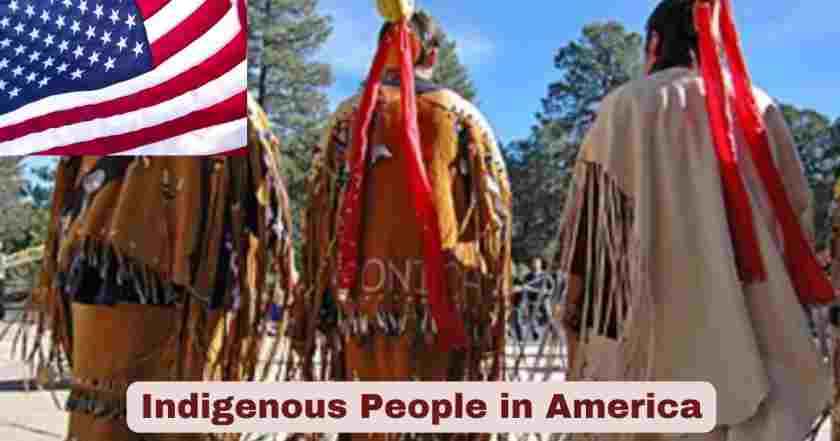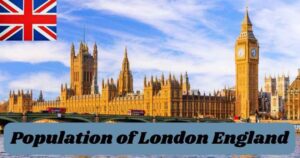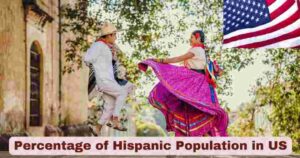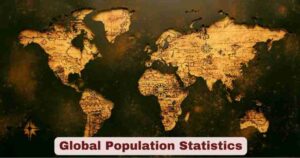Indigenous People in America 2025
The Indigenous peoples of America, comprising American Indians and Alaska Natives, represent a vibrant and diverse population with deep historical roots spanning thousands of years across the continent. In 2025, this community continues to preserve rich cultural traditions while navigating modern challenges including economic disparities, healthcare access, and educational opportunities. Understanding the current demographic landscape and socioeconomic conditions of Indigenous people in America 2025 requires examining verified data from authoritative government sources that paint a comprehensive picture of their lived experiences.
The American Indian and Alaska Native population has shown significant growth over recent decades, with individuals identifying either as Indigenous alone or in combination with other races. These communities maintain strong connections to their ancestral lands, with hundreds of federally recognized tribes preserving distinct languages, customs, and governance systems. From urban centers to reservation lands spanning 37 states, Indigenous Americans demonstrate remarkable resilience while confronting persistent inequalities that demand continued policy attention and resource allocation to ensure equitable outcomes for future generations.
Interesting Facts About Indigenous People in America 2025
| Category | Key Facts |
|---|---|
| Population | 9.1 million people identify as American Indian/Alaska Native alone or in combination with other races in 2024 |
| Federal Recognition | 574 federally recognized tribes operate across the United States as of 2024 |
| Reservations | Approximately 326 federally recognized American Indian reservations exist nationwide |
| Urban vs. Rural | 87% of the AI/AN population lives in urban areas, while 13% reside on reservations or tribal lands |
| Life Expectancy | 70.1 years for non-Hispanic AI/AN individuals compared to 78.4 years for all races in 2023 |
| Languages Spoken | 18.2% of non-Hispanic AI/AN people age 5+ speak a language other than English at home |
| Health Services | Indian Health Service provides healthcare to approximately 2.6 million American Indians and Alaska Natives |
| Educational Attainment | 11.3% of non-Hispanic AI/AN adults hold at least a bachelor’s degree vs. 22.1% of total US population |
| Poverty Rate | 19.0% of non-Hispanic AI/AN families experience poverty compared to 8.5% of all US families |
| Uninsured Rate | 16.2% of non-Hispanic AI/AN individuals lack health insurance vs. 8.2% of total population |
Data Source: U.S. Department of Health and Human Services, Office of Minority Health (2024), U.S. Census Bureau American Community Survey (2024)
The statistics reveal striking disparities between Indigenous Americans and the general population across multiple dimensions. The population of 9.1 million identifying as American Indian or Alaska Native represents individuals maintaining connections to hundreds of distinct tribal nations, each with unique cultural identities. The existence of 574 federally recognized tribes underscores the diversity within Indigenous communities, ranging from large nations with thousands of members to smaller tribal entities preserving traditional ways of life. The fact that 87% live in urban areas challenges common misconceptions about Indigenous people residing primarily on reservations, reflecting decades of migration patterns and federal relocation policies.
The life expectancy gap of 8.3 years between Indigenous Americans and the overall population represents one of the most troubling health disparities, stemming from inadequate healthcare funding, historical trauma, and socioeconomic challenges. Despite the Indian Health Service serving 2.6 million individuals, chronic underfunding limits access to comprehensive care. Educational attainment figures show that only 11.3% of Indigenous adults hold bachelor’s degrees, creating barriers to higher-paying employment opportunities. The poverty rate of 19.0% among Indigenous families directly correlates with lower educational attainment, limited economic opportunities on reservations, and systemic barriers to wealth accumulation that have persisted for generations.
Population Demographics of Indigenous People in the US 2025
| Demographic Category | American Indian/Alaska Native | Total US Population |
|---|---|---|
| Population (alone) | 1.8 million | 331+ million |
| Population (alone or in combination) | 9.1 million | 331+ million |
| Percentage of total population | 2.09% | 100% |
| Median age profile (16-24 years) | 18.6% | 14.4% |
| Prime working age (25-54 years) | 53.7% | 48.5% |
| Age 55 and over | 27.8% | 37.1% |
| Male population | 49% | 48.4% |
| Female population | 51% | 51.6% |
| Hispanic/Latino ethnicity | 32.2% | 17.0% |
| Foreign-born individuals | 14.5% | 16.5% |
Data Source: U.S. Census Bureau American Community Survey (2024), Bureau of Labor Statistics Current Population Survey (2019-2021)
The demographic profile of Indigenous people in the US 2025 reveals a younger population compared to the national average, with 53.7% concentrated in the prime working age bracket of 25-54 years. This age distribution suggests significant potential for economic productivity, yet employment and income statistics indicate this potential remains underutilized due to systemic barriers. The 18.6% representation in the 16-24 age group—approximately 5 percentage points higher than the national average—presents both opportunities and challenges, requiring substantial investment in educational infrastructure and youth development programs to prepare the next generation for success.
The fact that 32.2% of American Indians and Alaska Natives identify as Hispanic or Latino reflects the complex nature of Indigenous identity across the Americas, with many individuals claiming ancestral connections to native peoples from Mexico, Central America, and South America. The foreign-born percentage of 14.5% demonstrates ongoing migration patterns from Indigenous communities throughout the Western Hemisphere. The relatively balanced gender distribution, with 51% female and 49% male, aligns closely with national averages. However, the concentration of only 27.8% in the 55 and over age group—nearly 10 percentage points below the national rate—directly correlates with the significantly lower life expectancy of 70.1 years for Indigenous Americans, highlighting urgent public health concerns requiring immediate policy interventions.
State-Level Distribution of Indigenous Americans in the US 2025
| State | Percentage of AI/AN Population | Approximate Population |
|---|---|---|
| Alaska | 13.5% | ~99,000 |
| New Mexico | 8.3% | ~174,000 |
| South Dakota | 7.2% | ~64,000 |
| Oklahoma | 6.6% | ~261,000 |
| Montana | 5.1% | ~55,000 |
| North Dakota | 4.1% | ~31,000 |
| Arizona | 3.1% | ~225,000 |
| Wyoming | 1.4% | ~8,000 |
| North Carolina | 0.8% | ~84,000 |
| Washington | 0.8% | ~61,000 |
Data Source: U.S. Census Bureau American Community Survey (2024), U.S. Department of Health and Human Services
Geographic distribution patterns of Indigenous Americans across states in 2025 reveal significant concentrations in specific regions, particularly in areas with substantial reservation lands and historical tribal territories. Alaska leads with 13.5% of its population identifying as American Indian or Alaska Native, reflecting the state’s 229 federally recognized Alaska Native villages and strong Indigenous cultural presence. New Mexico’s 8.3% includes members of 23 tribal nations, including the Navajo Nation which extends into Arizona and represents the largest tribe by population. Oklahoma’s 6.6% stems from its history as Indian Territory, where dozens of tribes were forcibly relocated during the 19th century.
The substantial Indigenous populations in South Dakota (7.2%) and Montana (5.1%) correspond to major reservation lands including Pine Ridge, Rosebud, and Crow reservations. These states contain some of the most economically disadvantaged counties in the nation, where Indigenous communities face compounding challenges of geographic isolation, limited employment opportunities, and inadequate infrastructure. Arizona’s 3.1% includes portions of the Navajo Nation, the largest reservation by land area at 27,000 square miles, along with numerous other tribal communities. The presence of significant Indigenous populations in North Carolina (0.8%) and Washington (0.8%) reflects both historical tribal territories and urban migration patterns, with cities like Seattle and Charlotte hosting substantial Indigenous urban communities that maintain cultural connections while adapting to metropolitan environments.
Education Statistics for Indigenous People in the US 2025
| Educational Category | AI/AN Non-Hispanic (%) | Total US Population (%) |
|---|---|---|
| High school diploma (age 25+) | 34.9% | 25.7% |
| Less than high school | 16.7% | 9.2% |
| High school diploma, no college | 34.5% | 28.1% |
| Some college or associate’s degree | 30.4% | 25.7% |
| Bachelor’s degree or higher | 11.3% | 22.1% |
| Advanced graduate/professional degree | 6.1% | 14.7% |
| School enrollment (ages 16-24) | 44.8% | 52.4% |
| BIE schools nationwide | 183 schools | N/A |
| Students served by BIE | ~46,000 students | N/A |
Data Source: U.S. Census Bureau American Community Survey (2024), Bureau of Indian Education (2025)
Educational attainment data for Indigenous people in the US 2025 exposes persistent gaps that contribute to economic disparities and limited social mobility. While 34.9% of non-Hispanic American Indians and Alaska Natives hold at least a high school diploma, this represents a positive indicator of basic educational achievement. However, the completion rates drop dramatically at higher education levels, with only 11.3% attaining bachelor’s degrees—less than half the 22.1% national average. This educational gap directly impacts earning potential, access to professional careers, and intergenerational economic advancement for Indigenous families.
The 16.7% of Indigenous adults lacking high school diplomas compared to 9.2% nationally reflects historical and ongoing barriers including underfunded schools, geographic isolation on reservations, family economic pressures requiring early workforce entry, and educational systems that often fail to incorporate culturally relevant curricula. The Bureau of Indian Education operates 183 schools serving approximately 46,000 students across 23 states, but chronic underfunding and infrastructure challenges limit educational outcomes. School enrollment statistics showing 44.8% of Indigenous youth ages 16-24 enrolled in school—compared to 52.4% nationally—suggests significant numbers leave education early, potentially due to economic necessity, family obligations, or disconnection from educational institutions that don’t reflect their cultural identities and community values.
Employment and Labor Force Participation in the US 2025
| Labor Market Indicator | AI/AN Population | Total US Population |
|---|---|---|
| Labor force participation rate | 60.2% | 62.2% |
| Unemployment rate (2019-2021) | 8.7% | 5.7% |
| Unemployment rate (2021) | 8.2% | 5.3% |
| Youth unemployment (16-24) | 14.3% | 11.0% |
| Prime-age unemployment (25-54) | 7.9% | 5.0% |
| Male unemployment | 9.1% | 5.7% |
| Female unemployment | 8.2% | 5.7% |
| Disability unemployment | 11.9% | 10.0% |
| With disability rate | 14.8% | 11.7% |
| Management/professional occupations | 28.0% | 42.1% |
Data Source: U.S. Bureau of Labor Statistics Monthly Labor Review (2023), Current Population Survey (2019-2021)
Employment statistics for Indigenous people in America 2025 reveal substantial labor market challenges, with the unemployment rate of 8.7% representing 3.0 percentage points higher than the 5.7% national average during the 2019-2021 period. The labor force participation rate of 60.2% trails the 62.2% national figure, indicating that Indigenous adults are less likely to be either working or actively seeking employment. These disparities persist across all age groups, with youth unemployment at 14.3%—significantly exceeding the 11.0% national rate—creating barriers to career development and economic stability for young Indigenous Americans entering the workforce.
The unemployment rate of 9.1% for Indigenous men and 8.2% for Indigenous women both exceed national averages, demonstrating that labor market challenges affect Indigenous communities regardless of gender. The 11.9% unemployment rate among Indigenous people with disabilities—compared to 10.0% nationally—compounds existing vulnerabilities for this population. Geographic factors significantly influence employment outcomes, with Indigenous individuals residing in reservation areas facing a 10.5% unemployment rate compared to 8.1% for those living elsewhere. Only 28.0% of employed Indigenous workers hold management, professional, and related occupations compared to 42.1% of the total workforce, reflecting the educational attainment gaps and limited access to career advancement opportunities. Conversely, Indigenous workers are overrepresented in service occupations (22.6% vs. 16.2%) and natural resources, construction, and maintenance occupations (13.3% vs. 9.1%), sectors often characterized by lower wages and fewer benefits.
Income and Poverty Statistics in the US 2025
| Economic Indicator | AI/AN Non-Hispanic | Total US Population |
|---|---|---|
| Median household income (12-month) | $54,485 | $81,604 |
| Families in poverty | 19.0% | 8.5% |
| Unemployment rate | 7.8% | 4.5% |
| Weekly earnings under $500 | 15.3% | 11.3% |
| Weekly earnings $500-$749 | 30.2% | 22.0% |
| Weekly earnings $750-$1,199 | 30.5% | 29.0% |
| Weekly earnings $1,200+ | 23.9% | 37.7% |
| Private health insurance | 44.8% | 67.2% |
| Public health insurance | 49.1% | 36.8% |
| No health insurance | 16.2% | 8.2% |
Data Source: U.S. Census Bureau American Community Survey (2024), Office of Minority Health (2024)
Income statistics for Indigenous people in the US 2025 reveal profound economic disparities, with the median household income of $54,485 representing only 66.8% of the $81,604 national median. This $27,119 income gap translates to reduced purchasing power, limited savings capacity, and decreased ability to invest in education, housing, and wealth-building assets that enable intergenerational economic advancement. The poverty rate of 19.0% among Indigenous families—more than double the 8.5% national rate—demonstrates that nearly one in five Indigenous families struggle to meet basic needs, affecting children’s health, educational outcomes, and future opportunities.
Weekly earnings distributions show 15.3% of full-time Indigenous workers earn under $500 weekly, compared to 11.3% nationally, while only 23.9% earn $1,200 or more weekly versus 37.7% of all workers. These disparities stem from multiple factors including lower educational attainment, concentration in lower-wage occupations, geographic isolation limiting job options, and systemic discrimination in hiring and promotion. Health insurance coverage patterns reflect economic vulnerabilities, with 16.2% of Indigenous individuals lacking any health insurance—double the 8.2% national uninsured rate. While 49.1% rely on public health insurance (primarily through the Indian Health Service, Medicaid, and Medicare), only 44.8% have private insurance compared to 67.2% nationally. The heavy reliance on public programs underscores the need for adequate funding of the Indian Health Service, which provides healthcare to 2.6 million Indigenous people but receives per capita funding substantially below Medicare and Veterans Administration levels.
Health Disparities and Life Expectancy in the US 2025
| Health Indicator | AI/AN Population | Comparison Group |
|---|---|---|
| Life expectancy at birth | 70.1 years (2023) | 78.4 years (all races) |
| Female life expectancy | 73.5 years | 81.2 years (all races) |
| Male life expectancy | 66.7 years | 75.6 years (all races) |
| IHS per capita spending | ~$4,078 (2019) | $11,582 (Medicare) |
| Fair or poor health (self-reported) | 24.4% | Highest among all racial groups |
| Leading cause of death #1 | Heart disease | Same for all races |
| Leading cause of death #2 | Cancer | Same for all races |
| Leading cause of death #3 | Unintentional injuries | Not in top 3 nationally |
| Leading cause of death #4 | Chronic liver disease | Not in top 5 nationally |
| Leading cause of death #5 | Diabetes | #7 nationally |
Data Source: Centers for Disease Control and Prevention (2023), Indian Health Service (2024), U.S. Department of Health and Human Services
Health disparities facing Indigenous people in America 2025 represent perhaps the most urgent crisis, with life expectancy of 70.1 years falling 8.3 years below the 78.4-year national average. This gap—larger than for any other racial or ethnic group—reflects cumulative effects of inadequate healthcare access, chronic underfunding of Indian Health Service facilities, historical trauma, poverty, and environmental health hazards affecting reservation communities. Indigenous women live to 73.5 years compared to 81.2 years for all women, while Indigenous men average 66.7 years versus 75.6 years nationally, with both genders experiencing significantly shortened lifespans.
The Indian Health Service per capita spending of approximately $4,078 pales compared to Medicare’s $11,582, creating a two-tiered healthcare system where Indigenous Americans receive substantially less investment in their health despite treaty obligations. The fact that 24.4% of Indigenous people report fair or poor health—the highest rate among all racial groups—demonstrates how chronic conditions, limited preventive care, and social determinants of health compound to create poor health outcomes. The leading causes of death reveal patterns distinct from the general population: while heart disease and cancer top both lists, unintentional injuries rank third for Indigenous people (often involving vehicle accidents and other trauma), chronic liver disease appears fourth (linked to hepatitis and alcohol-related conditions), and diabetes ranks fifth despite appearing only seventh nationally. These patterns reflect both genetic predispositions and environmental factors including food insecurity, limited access to healthy foods on reservations, and inadequate chronic disease management resulting from systemic healthcare failures.
Housing and Living Conditions in the US 2025
| Housing Indicator | AI/AN on Reservations | National Average |
|---|---|---|
| Substandard housing rate | 40% | 6% |
| Overcrowded homes | ~33% | ~3% |
| Lacking complete plumbing | Estimated 10-20% | <2% |
| Urban residence | 87% | 80% |
| Reservation residence | 13% | N/A |
| Public sector employment (reservation) | 37.6% | 13.6% (national) |
| Public sector employment (non-reservation) | 12.8% | 13.6% (national) |
Data Source: National Congress of American Indians, Indian Health Service (2024), U.S. Census Bureau (2020)
Housing conditions for Indigenous people in the US 2025, particularly those residing on reservations, represent a critical area of need with 40% of on-reservation housing classified as substandard compared to only 6% nationally. This staggering disparity encompasses homes with structural deficiencies, inadequate heating or cooling, unsafe electrical systems, and other code violations that threaten occupant health and safety. The overcrowding rate of approximately 33% on reservations—where multiple families or generations share housing designed for single families—creates conditions conducive to disease transmission, mental health stress, and reduced educational outcomes for children lacking quiet study spaces.
The fact that 87% of Indigenous Americans live in urban areas challenges stereotypes about reservation residence, reflecting historical federal relocation programs, economic migration seeking employment opportunities, and pursuit of educational advancement. However, the 13% residing on reservations or tribal lands often face the most severe infrastructure challenges, including limited access to electricity, clean water, and modern sanitation systems. The 37.6% public sector employment rate for Indigenous workers on reservations—nearly triple the 13.6% national average—demonstrates both the importance of tribal governments as employers and the limited private sector economic development in reservation communities. For Indigenous people living off reservations, the public sector employment rate of 12.8% closely approximates the national average, suggesting that geographic location and local economic conditions significantly influence employment patterns more than demographic characteristics alone.
Tribal Recognition and Sovereignty in the US 2025
| Sovereignty Indicator | Details |
|---|---|
| Federally recognized tribes | 574 tribes as of 2024 |
| Federal reservations | Approximately 326 reservations |
| States with reservations | 37 states |
| IHS service population | 2.6 million individuals |
| IHS service area states | 37 states |
| Tribal self-determination contracts | 567 tribes eligible for services |
| Bureau of Indian Education schools | 183 schools |
| BIE school locations | 64 reservations in 23 states |
| Tribal judicial systems | Hundreds of tribal courts operating |
| Tribal law enforcement agencies | Numerous across Indian Country |
Data Source: Bureau of Indian Affairs (2024-2025), Indian Health Service, Bureau of Indian Education
Tribal sovereignty and federal recognition remain foundational to Indigenous governance in America 2025, with 574 federally recognized tribes exercising governmental authority over their lands and members. Federal recognition provides access to services, establishes government-to-government relationships with federal and state authorities, and affirms inherent tribal sovereignty predating the United States Constitution. These 574 tribes range from large nations like the Navajo Nation with over 300,000 enrolled members to smaller communities with populations in the hundreds, each maintaining distinct political structures, legal codes, and cultural protocols.
The 326 federally recognized reservations across 37 states represent lands held in trust by the federal government for tribal use, though historical land loss through allotment policies, forced sales, and other mechanisms reduced tribal landholdings from hundreds of millions of acres historically to approximately 56 million acres today—less than 2.3% of the continental United States. The Indian Health Service provides healthcare services across these 37 states to 2.6 million individuals, though chronic underfunding limits service quality and availability. The Bureau of Indian Education operates 183 schools on 64 reservations across 23 states, serving approximately 46,000 students, though many Indigenous children attend public schools in their local communities. Tribal courts and law enforcement agencies exercise jurisdiction over civil and criminal matters involving tribal members on reservation lands, though jurisdictional complexities involving non-Indians, major crimes, and cross-boundary issues create ongoing legal challenges requiring coordination between tribal, state, and federal authorities in Indian Country throughout 2025.
Native American Language Preservation in the US 2025
| Language Category | Statistics |
|---|---|
| Total Native languages spoken | Over 70 Native North American languages |
| Total speakers (2021) | 342,311 speakers age 5 and older |
| Total speakers (2013) | 364,331 speakers |
| Decline rate (2013-2021) | -6% decrease in speakers |
| Most spoken language | Navajo (Diné) with 161,174 speakers |
| Second most spoken | Yupik with approximately 19,000 speakers |
| Third most spoken | Dakota with approximately 19,000 speakers |
| States with top 15 languages | 9 states feature Native languages in top 15 |
| Navajo-speaking states | Arizona, New Mexico, Utah, Wyoming |
| Federal language grants | $12 million annually through Administration for Native Americans |
Data Source: U.S. Census Bureau American Community Survey (2017-2021), Administration for Native Americans, Department of the Interior
The preservation of Native American languages represents a critical cultural imperative facing Indigenous communities in 2025, with 342,311 speakers of over 70 Native North American languages recorded across the United States. The 6% decline from 364,331 speakers in 2013 to 342,311 speakers in 2021 demonstrates the urgent threat to linguistic diversity, as elders who are fluent speakers pass away without sufficient numbers of younger generations achieving fluency. Navajo remains the most widely spoken Indigenous language with 161,174 speakers, constituting approximately 47% of all Native language speakers, yet even this relatively robust language shows decline from 166,826 speakers in 2013. Other major languages including Zuni (declining from 9,615 to 8,109 speakers) and Choctaw (decreasing from 9,635 to 7,260 speakers) experienced even steeper losses.
The geographic concentration of Native language speakers reveals important patterns, with New Mexico featuring six Native North American languages among its top 15 most spoken languages—more than any other state. Navajo serves as the most spoken language other than Spanish among New Mexico residents who speak languages besides English. In nine states nationwide, a Native North American language ranks among the top 15 languages spoken at home, demonstrating the continuing vitality of Indigenous linguistic traditions despite overall decline. Federal support through the Administration for Native Americans’ Living Languages Grant Program provides approximately $12 million annually to tribes and organizations working to preserve languages, though advocates argue this investment pales compared to historical expenditures on policies that suppressed Indigenous languages through boarding schools and forced assimilation programs spanning over a century.
Crime and Justice Statistics for Indigenous People in the US 2025
| Crime and Justice Indicator | AI/AN Population | All Races |
|---|---|---|
| Violent crime victimization rate | 124 per 1,000 persons age 12+ | 50 per 1,000 |
| Interracial violent crime | 70% committed by different race | 31% for all races |
| Alcohol-involved violent crime | 55% of victimizations | 44% for all races |
| Crimes reported to police | 46% of violent victimizations | 41% for all races |
| Jail incarceration rate | 1,083 per 100,000 adults | Average rates |
| State/Federal prison rate | 870 per 100,000 adults | 629 per 100,000 |
| Total correctional supervision | 4,194 per 100,000 adults | 2,907 per 100,000 |
| Probation rate | 1,965 per 100,000 adults | 1,650 per 100,000 |
| Alcohol-related arrests | 2,545 per 100,000 | 1,079 per 100,000 |
| Federal court filings (2025) | 1,126 cases | 60,403 total cases |
Data Source: Bureau of Justice Statistics (1992-2025), FBI Uniform Crime Reports, U.S. Department of Justice
Indigenous people experience violent crime victimization at rates more than double the national average, with 124 violent crimes per 1,000 individuals age 12 or older compared to 50 per 1,000 across all races during the most recent measurement period. This staggering disparity manifests across all age groups and geographic locations, with Indigenous youth ages 18-24 experiencing approximately 232 violent victimizations per 1,000—representing roughly one violent crime for every four individuals in this age cohort. The nature of violence affecting Indigenous communities differs markedly from other populations, with 70% of violent crimes involving offenders of a different race, the highest interracial victimization rate of any group. This pattern reflects complex jurisdictional issues on tribal lands and the prevalence of border town violence affecting Indigenous individuals.
Alcohol involvement in violent crime against Indigenous victims reaches 55% of all victimizations—substantially higher than the 44% rate for all races—and climbs to nearly 70% for violent crimes committed by family members. Despite experiencing dramatically higher victimization rates, Indigenous victims report crimes to police at rates (46%) comparable to the general population (41%), suggesting that underreporting does not explain victimization disparities. The criminal justice system’s impact on Indigenous communities extends beyond victimization, with 4,194 American Indians and Alaska Natives per 100,000 adults under correctional supervision—including probation, parole, prison, and jail—compared to 2,907 per 100,000 nationally. Indigenous individuals are held in local jails at rates of 1,083 per 100,000 adults, the highest jail incarceration rate of any racial group, while State and Federal prison rates of 870 per 100,000 exceed the national rate of 629 per 100,000 by 38%. Arrests for alcohol-related offenses occur at rates of 2,545 per 100,000—more than double the 1,079 per 100,000 rate for all races—reflecting both substance abuse challenges and potential law enforcement practices disproportionately targeting Indigenous individuals for these violations.
Military Service and Veterans in the US 2025
| Military Service Indicator | AI/AN Veterans | National Average |
|---|---|---|
| Service rate | Highest per capita of any group | Lower than AI/AN |
| Post-9/11 enlistment rate | Nearly 19% enlisted | Lower than AI/AN |
| Estimated veteran population | Approximately 140,000+ veterans | 18+ million total |
| Female veteran percentage | 11.5% of AI/AN veterans | 8% of other ethnicities |
| VA healthcare usage | 39% used VA in past 6 months | 27% for all veterans |
| Fair/poor health status | Higher rates than general veterans | Lower rates |
| Service-connected disabilities | Higher prevalence | National average |
| Homelessness risk | Higher vulnerability | National average |
| Unemployment rate (veterans) | Higher than average | National average |
| Median household income | Lower than non-AI/AN veterans | National average |
Data Source: U.S. Department of Veterans Affairs (2024-2025), National Survey of Veterans, Bureau of the Census
American Indians and Alaska Natives serve in the U.S. Armed Forces at rates five times the national average, representing the highest per capita military service rate of any demographic group in the nation. Since 9/11, the enlistment rate among Indigenous people has reached nearly 19%—substantially exceeding participation rates for other racial and ethnic groups. This extraordinary military service tradition spans over 200 years, with Indigenous warriors serving with distinction in every major American conflict despite facing discrimination and denial of citizenship rights through much of that history. The current Indigenous veteran population numbers approximately 140,000 or more, though precise counts remain challenging due to identification and reporting variations across data systems. Indigenous women veterans comprise 11.5% of American Indian and Alaska Native veterans—significantly higher than the 8% female representation among veterans of other ethnicities.
Despite their exemplary service, Indigenous veterans face disproportionate challenges upon returning to civilian life. Usage of VA healthcare services shows 39% of Indigenous veterans accessed VA medical care within the past 6 months—higher than the 27% rate for all veterans—suggesting greater health needs and stronger reliance on government-provided healthcare. Self-reported health status indicates Indigenous veterans experience fair or poor health at elevated rates compared to the general veteran population, correlating with service-connected disabilities, exposure to combat trauma, and underlying health disparities affecting Indigenous communities broadly. Unemployment rates among Indigenous veterans exceed the national veteran average, while median household incomes fall below those of non-Indigenous veterans with comparable service records. These disparities stem from multiple factors including geographic isolation on reservations with limited employment opportunities, lower educational attainment levels predating military service, and potential discrimination in hiring practices. Addressing Indigenous veteran challenges requires expanded outreach to remote tribal communities, culturally competent mental health services acknowledging historical trauma, and economic development initiatives creating career pathways in reservation and rural areas where many Indigenous veterans return after service.
Tribal Criminal Justice Systems in the US 2025
| Tribal Justice System Component | Statistics |
|---|---|
| Tribal law enforcement agencies | 135 tribal police departments |
| Tribal sworn officers | 1,731 full-time officers |
| BIA law enforcement officers | 339 full-time sworn officers |
| Tribal detention facilities | 67+ tribal jails operating |
| Total jail capacity | 2,000+ adults and juveniles |
| Tribal detention staff | 659 employees nationwide |
| Tribal court systems | Hundreds operating across tribes |
| Major Crimes Act offenses | Federal jurisdiction required |
| VAWA expanded jurisdiction | Limited tribal authority over non-Indians |
| Federal prosecutions (Indian Country) | 1,126 cases filed (2025) |
| Violent crime percentage (Federal) | 47.5% of AI/AN Federal cases |
Data Source: Bureau of Justice Statistics (2023-2025), Bureau of Indian Affairs, FBI Law Enforcement Data
Tribal criminal justice systems operate within a complex jurisdictional framework where 135 tribal law enforcement agencies employing 1,731 full-time sworn officers provide primary policing services across Indian Country. The Bureau of Indian Affairs supplements tribal police with 339 full-time sworn officers serving reservations lacking adequate local law enforcement or where treaties designate federal responsibility. Tribal detention facilities number 67 or more nationwide, maintaining combined capacity for over 2,000 adult and juvenile detainees and employing 659 staff members including detention officers and dispatchers. The largest concentrations of tribal law enforcement and detention infrastructure exist in states with substantial reservation populations, including Arizona (Navajo Nation with 208 adult and 36 juvenile capacity), Montana (Blackfeet Tribe with 34 adult and 34 juvenile capacity), and South Dakota (multiple Sioux tribes).
Jurisdictional complexities severely hamper tribal criminal justice effectiveness, particularly regarding Major Crimes Act offenses (murder, rape, kidnapping, arson, assault, burglary, robbery) which require federal prosecution even when committed by Indigenous offenders against Indigenous victims on tribal lands. This system creates delays, reduces conviction rates, and frustrates tribal communities seeking justice. The 2013 reauthorization of the Violence Against Women Act (VAWA) granted limited expanded jurisdiction allowing certain tribes to prosecute non-Indian domestic violence offenders, though implementation remains restricted and resource-intensive. Federal prosecutions originating in Indian Country resulted in 1,126 case filings in U.S. district courts during 2025, with 47.5% involving violent offenses—dramatically higher than the 6.7% violent crime percentage across all federal prosecutions. This concentration reflects both the Major Crimes Act requirements and the severity of crime challenges facing Indigenous communities. Tribal courts handle thousands of civil matters and misdemeanor criminal cases annually, but chronic underfunding limits judicial infrastructure, legal representation availability, and implementation of alternative justice approaches incorporating traditional Indigenous conflict resolution practices that could reduce recidivism and heal community harm more effectively than incarceration alone.
Future Outlook
The trajectory for Indigenous people in America moving beyond 2025 depends critically on sustained federal investment, policy reforms addressing systemic inequities, and strengthening tribal self-determination. Demographic trends showing a younger Indigenous population present opportunities if accompanied by expanded educational access, culturally responsive curricula, and career development programs preparing youth for evolving economy demands. Healthcare improvements require substantial increases in Indian Health Service funding approaching parity with Medicare expenditures, infrastructure investments bringing clean water and modern sanitation to all reservation communities, and expanded mental health services addressing historical trauma and contemporary stressors. Economic development initiatives supporting tribal enterprises, renewable energy projects on tribal lands, and improved internet connectivity enabling remote work opportunities could dramatically improve employment prospects and household incomes.
Legal and policy developments will shape future outcomes, including potential expansion of tribal jurisdiction, resolution of water rights disputes, protection of sacred sites, and recognition of currently unrecognized tribes seeking federal status. Language revitalization efforts require exponentially increased funding beyond the current $12 million annually, with immersive programs in schools, support for elder-youth mentorship, and integration of Native languages into daily community life before the remaining 342,311 speakers decline further. Climate change poses existential threats to Alaska Native villages facing coastal erosion and melting permafrost, requiring managed retreat strategies and substantial relocation funding. Criminal justice reforms must address the 124 per 1,000 violent victimization rate through expanded tribal jurisdiction, increased law enforcement presence, victim services, and culturally grounded prevention programs tackling root causes including poverty and substance abuse. Veterans’ services need enhancement to serve the 140,000+ Indigenous veterans who sacrificed for America yet face disproportionate unemployment, homelessness, and health challenges. Success ultimately requires honoring treaty obligations, respecting tribal sovereignty, and ensuring Indigenous communities possess resources and decision-making authority to chart their own futures while maintaining cultural identities that have persevered for millennia despite centuries of colonization, forced assimilation, and systemic marginalization.
Disclaimer: The data research report we present here is based on information found from various sources. We are not liable for any financial loss, errors, or damages of any kind that may result from the use of the information herein. We acknowledge that though we try to report accurately, we cannot verify the absolute facts of everything that has been represented.







